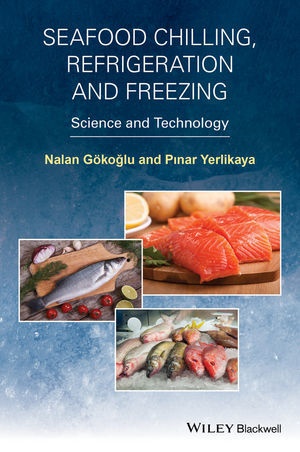En savoir plus
Informationen zum Autor Nalan Gökoðlu is the Dean of the Fisheries Faculty at Akdeniz University in Turkey. She has worked as a researcher on fish processing, preservation and quality issues for almost 25 years, and also teaches in these subjects. Pinar Yerlýkaya is in the Fisheries Faculty at Akdeniz University, Turkey, where she works on fish processing and quality issues. Klappentext Fish and seafood are highly perishable, and must be preserved immediately after being caught or harvested. It is very important both to preserving its quality and to ensure that it does not pose any risks to human health upon consumption. Chilling, refrigeration and freezing are the major preservation methods used with seafood and fish products, all three processes aiming to preserve the freshness and flavour of the fish. Consumer demand for fish remains high despite escalating prices in the last ten years which have seen the retail cost of the most popular breeds (cod, haddock, salmon) more than double for unfrozen fish. Many consumers appear to be willing to pay a premium for freshness and quality, both of which are closely linked in shoppers' minds with the efficient chilling and refrigeration of the fish along the supply chain. At the same time, frozen fish and seafood has also grown more popular with shoppers, as a cheaper, more convenient alternative to refrigerated fresh fish and seafood.Seafood Chilling, Refrigeration and Freezing presents the science behind the chilling, refrigerating and freezing of fish and seafood, describing the chemical, microbiological and physical changes which take place during preservation, and considering the new technologies which can be used, highlighting their benefits and their economic implications. The book takes account of the different requirements for different breeds of fish and seafood, and includes both traditional and novel technologies, providing both current and future perspectives. It will be required reading for food scientists, fish processors and retailers as well as fish specialists, researchers and process designers. Zusammenfassung Fish and seafood are highly perishable, and must be preserved immediately after being caught or harvested. It is very important both to preserving its quality and to ensure that it does not pose any risks to human health upon consumption. Inhaltsverzeichnis Preface ix 1 Introduction 1 1.1 Spoilage of seafood 1 1.2 Preservation of seafood 2 1.2.1 Chilling 3 1.2.2 Refrigeration 3 1.2.3 Freezing 3 2 Chemical composition of fish 5 2.1 Proteins 5 2.1.1 Sarcoplasmic proteins 6 2.1.2 Myofibrillar proteins 7 2.1.3 Stroma proteins 8 2.1.4 Non?]protein nitrogen compounds 9 2.1.4.1 Free amino acids 9 2.1.4.2 Peptides 10 2.1.4.3 Nucleotides 10 2.1.4.4 Guanidine compounds 12 2.1.4.5 Trimethylamine oxide (TMAO) 12 2.1.4.6 Urea 13 2.1.4.7 Betaines 13 2.2 Lipids 13 2.2.1 Saturated fatty acids 15 2.2.2 Mono?]unsaturated fatty acids 16 2.2.3 Poly?]unsaturated fatty acids 16 2.3 Carbohydrates 18 2.4 Minerals 19 2.4.1 Macroelements 20 2.4.2 Microelements 21 2.5 Vitamins 22 2.5.1 Fat?]soluble vitamins 23 2.5.2 Water?]soluble vitamins 24 2.6 Conclusion 25 References 32 3 Quality changes and spoilage of fish 38 3.1 Introduction 38 3.2 Factors affecting quality of fish 39 3.2.1 Species 39 3.2.2 Size 40 3.2.3 Distance to port 41 3.2.4 Diet of fish 41 3.2.5 Fishing grounds and methods 41 3.2.6 Sex 42 3.3 Post?]mortem changes in fish muscle 43 3.3.1 Rigor mortis 44 3.3.2 Chemical changes 45 3.3.3 Microbiological changes 48 3.3.4 Enzymatic changes 50 3.3.5 Sensory changes ...

